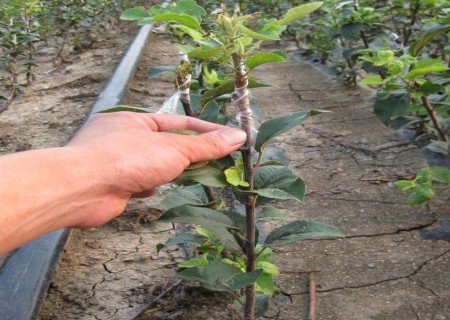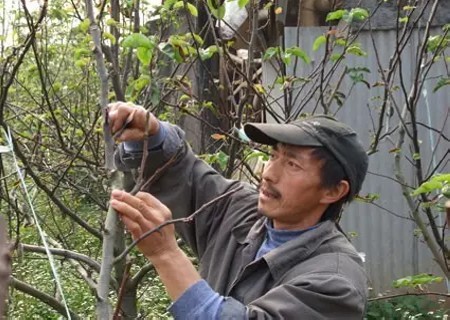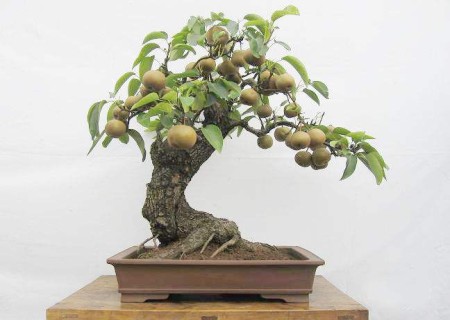Management methods of grafted seedlings of Pear trees
Because of the high density in the sowing nursery, the growth of the grafted pear seedlings is often inconsistent, so it is best to separate the grafted semi-mature seedlings before the next spring in order to expand the nutritional area of the seedlings, and at the same time, cutting off the root system also solves the problem that the main root of the rootstock is too long. after planting, the planed seedlings are respectively planted, managed and inoculated according to the grafted and ungrafted, the sturdy and the weak.

After planting, the surviving shearing rootstock, with the germination and growth of the buds, remove the buds and tillers in time, and set up pillars, and topdressing twice in the early stage of rapid seedling growth from May to June, applying 5 to 10 kilograms of urea per mu each time.
Doing a good job in the management of bud grafted seedlings before coming out of the nursery can improve the survival rate and seedling quality of grafted seedlings.
Check survival: generally, branch grafting takes 20-30 days to see whether it is alive or not. If the bud is moist and shiny, the petiole will be removed at a touch; if the bud turns yellow and black, and the petiole shrinks on the bud, it will not be alive. For those who are not alive, the rootstock should be replaced immediately while the rootstock can still be removed from the skin. After survival, the upper bud with better direction and strong growth should be selected to prolong the growth, and the rest should be removed.
Cutting stock: for budding fruit trees, the second cutting stock method is used to cut off the rootstock before budding. For the first time, a 10 cm anvil pile is left above the bud as the pillar of the bud graft, and then the bud graft is tied to it; the second time, when the bud graft is integrated with the rootstock, it is cut off from the base.
Tiller removal: budding and cutting rootstock will cause a large number of tillers at the base of the rootstock, which should be erased in time so as not to affect the growth of grafted seedlings. Tillering needs to be done many times, do not touch the grafting site and seedling grafting when erasing the rootstock buds.
Heart-picking: when the buds of grafted seedlings grow to a certain height, heart-picking is carried out to promote their thicker growth. Most pear cultivars have low ability to form branches. In the past, when using twigs to pick the heart, they could only send out a secondary shoot to continue to prolong the growth without branching.
Fertilization and irrigation: apply fertilizer once to twice in summer, sprinkle with urea 10 kg ~ 15 kg chemical water per mu, or dig a trench 6 cm away from the root, irrigation in time, or spray 0.3% to 0.5% urea solution per mu. Fertilizer and water management after cutting rootstocks in spring, fertilizer and water management should be strengthened in time, seedling height about 30 or combined watering, topdressing urea 5 to 10 kg per mu.
Pest control: when budding and sprouting new shoots, they are often harmed by aphids, ground tigers and other pests, so attention should be paid to drug control.
Time: 2019-06-09 Click:
- Prev

High yield methods of pear trees after grafting
Pear is widely cultivated in the north and south of China and has strong adaptability. Resistant to rough management, easy to early fruit and high yield, long economic life. The fruit is resistant to storage and transportation, good merchandise and long supply period, so it is deeply welcomed by domestic and foreign markets. The purpose of grafting is to optimize tree quality, enhance resistance and promote high yield. Have a good grasp of the ratio of output to joint. Practice has proved
- Next

Pruning principle of bonsai of fruit trees
When there are too many bonsai branches of fruit trees, it is easy to cause scattered nutrients, lack of internal light, poor fruit quality and so on. Therefore, cross branches, overlapping branches, disease and insect branches and overgrown branches should be cut off before sprouting in spring, which is called basic pruning. During the summer fruit growing period
Related
- Fuxing push coffee new agricultural production and marketing class: lack of small-scale processing plants
- Jujube rice field leisure farm deep ploughing Yilan for five years to create a space for organic food and play
- Nongyu Farm-A trial of organic papaya for brave women with advanced technology
- Four points for attention in the prevention and control of diseases and insect pests of edible fungi
- How to add nutrient solution to Edible Fungi
- Is there any good way to control edible fungus mites?
- Open Inoculation Technology of Edible Fungi
- Is there any clever way to use fertilizer for edible fungus in winter?
- What agents are used to kill the pathogens of edible fungi in the mushroom shed?
- Rapid drying of Edible Fungi

